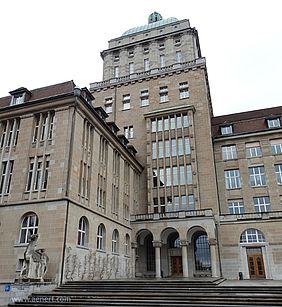The QS World University Rankings is released annually by Quacquarelli Symonds (QS) and presents the leading universities worldwide. The QS system includes a comprehensive global list and several subject rankings, alongside five independent regional tables (Asia, Latin America, Emerging Europe and Central Asia, the Arab Region, and BRICS). For the complete 2020 University Rankings by Subject, please visit the homepage of Quacquarelli Symonds.
The QS World University Rankings by Subject rates the world’s top universities in individual subject areas, covering 48 subjects. The rankings are compiled using four sources. The first two of these comprise QS’s own global surveys of academics and employers and are used to assess the international reputation of institutions in each subject. The second two indicators evaluate research impact, based on research citations per paper and h-index in the relevant subject. The h-index is a parameter which determines both the productivity and impact of the published work of a scientist or scholar. The index is based on the set of the academic’s most cited papers and the number of citations that they have received in other publications.
In 2020, the Massachusetts Institute of Technology has once again claimed top position and is world-leader in 12 subject tables - more than any other institution. Stanford University achieved 2nd position, while the University of Cambridge is ranked 3rd. This is a remarkable result for US universities since the US higher education system remains in regression. The number of top-50 programs offered by American universities has decreased from 806 in 2018 to 769 in 2020. There are also decreases in the number of top-10 and top-100 programs offered by American institutions. The United Kingdom's university programs, on the other hand, have witnessed overall year-on-year improvement, with more rises (306) than falls (238).
Asia's best-performing institution is the Nanyang Technological University of Singapore (8th position), which collaborates with the world’s leading technology companies in many areas of societal importance and impact, including, for example, artificial intelligence, transportation, healthcare and clean energy. The National University of Singapore, ranked 10th, achieved the second-best result among Asian universities this year.
Mainland China offers 100 top-50 programs, although the rate of improvement of its universities is slowing. Its best-performing university is Tsinghua University which claimed 9th position. Peking University has dropped out of the top-20 and achieved 22nd position.
India's universities have begun recording moderate improvements, with 53 programs improving and only 29 declining: there is also an increase in the number of top-50 and top-100 programs provided by Indian higher education. India’s best-performing university is the Indian Institute of Technology Bombay, ranked 44th.
Russia's higher education system has continued to improve, with Lomonosov Moscow State University obtaining 59th position. Latin America's best-performing universities are Universidade de São Paulo (86th position) in Brazil and Universidad Nacional Autónoma de México (99th position).
Among the top-10, three US universities and three UK institutions are represented, as well as three Asian universities (Singapore, China). Another country to have secured a spot in the top-10 is Switzerland, with ETH Zurich dropping one spot to 4th position this year.
